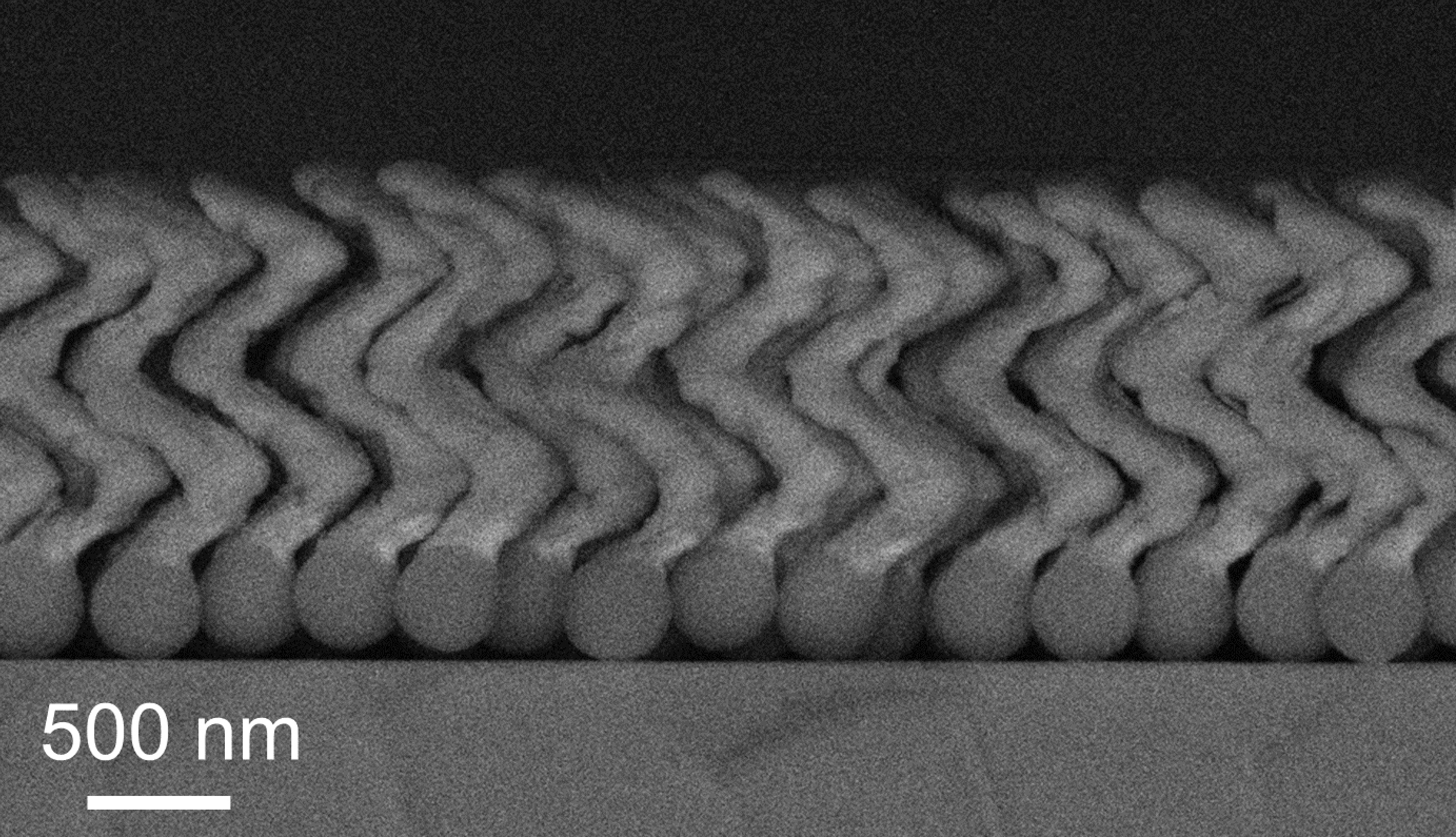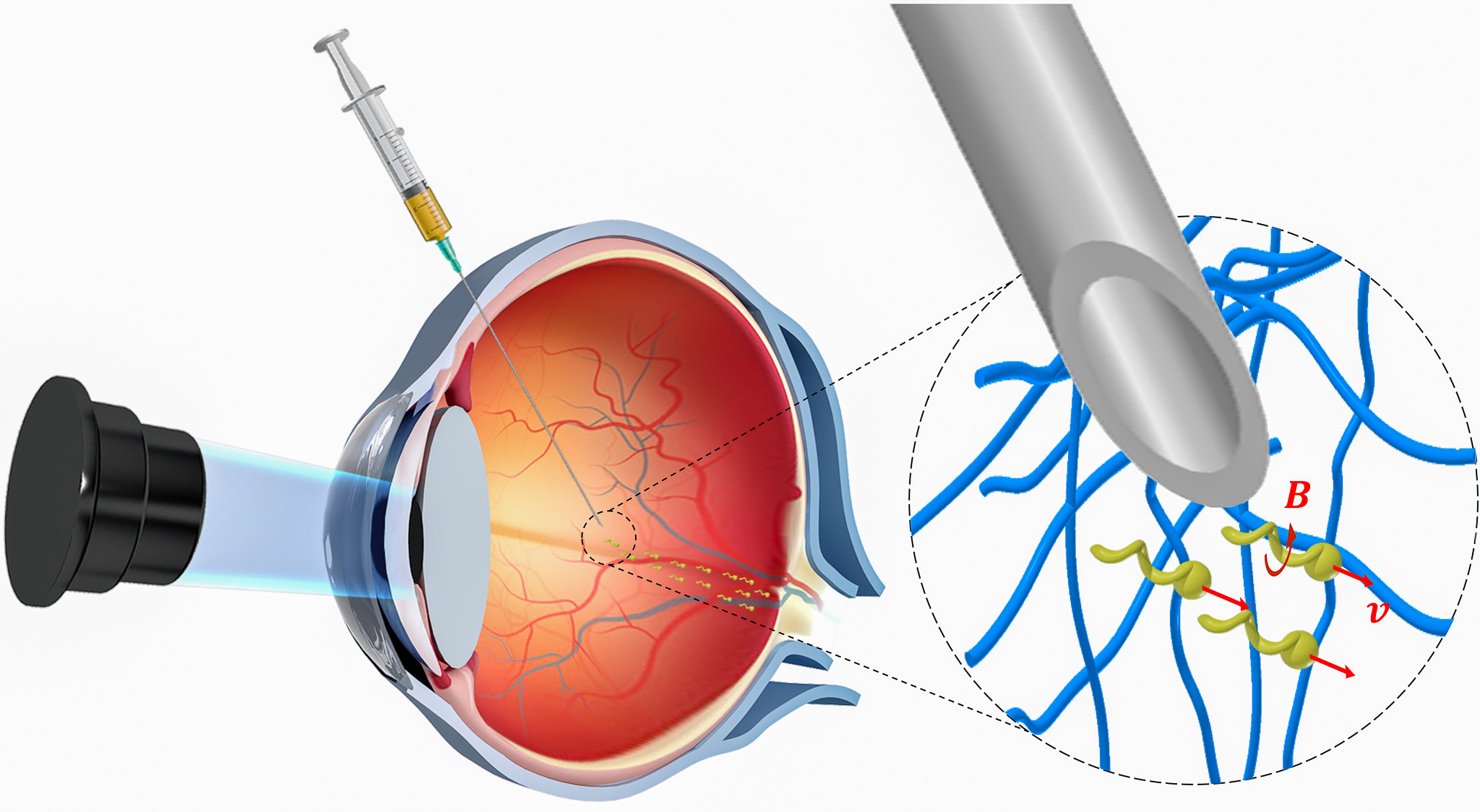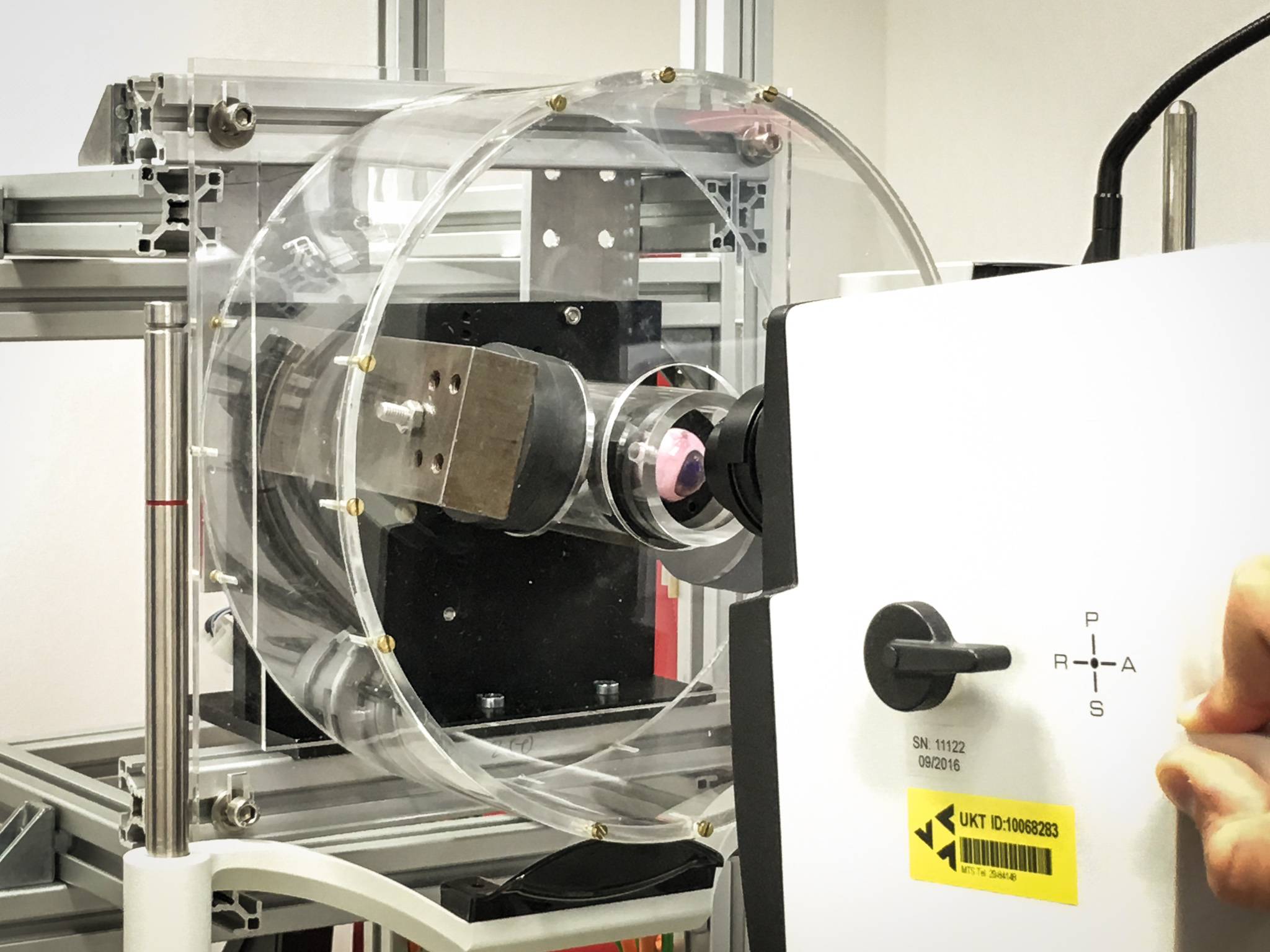Nanorobots as future minimally invasive tools for the eye
It is extremely difficult to place drugs in the right place in the eye. When using droplets, only a small fraction of the drug usually reaches its target. Injecting drugs into the eye is also more a matter of luck than judgement. Basic researchers at the Max Planck Institute for Intelligent Systems in Stuttgart have now developed a nanorobot that can be loaded with active ingredients for treating eye diseases and directed through the solid tissue of the vitreous body in a very short time.
Effective therapies for eye diseases have been around for quite a while. When applied as droplets, most of the drug is removed when the eyelids move. High drug doses therefore need to be applied, which in turn can lead to side effects. When injected directly into the eye, the active ingredient molecules are randomly distributed by passive diffusion. In addition, the drug takes a relatively long time to reach the disease site - if indeed it ever gets there. The vitreous body inside the eye is the main barrier for drugs that need to reach the back of the eye, for example the retina, in order to exert their action.
Nanorobot moves for the first time through the vitreous body
 Dr. Tian Qiu and his research group have for the first time developed a nanorobot that can travel through the vitreous body to the posterior eye. © T. Qiu, MPI-IS
Dr. Tian Qiu and his research group have for the first time developed a nanorobot that can travel through the vitreous body to the posterior eye. © T. Qiu, MPI-ISFor many years, researchers at the Max Planck Institute for Intelligent Systems in Stuttgart have been working on a promising solution for transporting therapeutic agents into areas of the human body that are hard to reach. This solution involves tiny robots in the micro- and nanometer range that can be loaded with drugs and directed to their final destination by applying a magnetic field. However, so far the scientists have only managed to move the robot through model fluids, not real tissue such as the vitreous body of the eye.
"The vitreous body is a gel-like, translucent substance that consists of 98% water and only 2% proteins, but it forms a fairly tight-meshed protein matrix that is quite an impermeable barrier to drugs that need to reach the back of the eye," explains Dr. Tian Qiu, scientist in the MPI’s "Micro, Nano, and Molecular Systems" research group and, more recently, CyberValley research group leader at the University of Stuttgart. "It is almost impossible to reach the retina with currently available techniques," says Qiu.
 The nanopropellers must be about 200 times smaller than a human hair to pass through the close-meshed protein matrix of the vitreous body. © MPI for Intelligent Systems
The nanopropellers must be about 200 times smaller than a human hair to pass through the close-meshed protein matrix of the vitreous body. © MPI for Intelligent SystemsThe Max Planck researchers therefore started constructing a nanorobot that can overcome the vitreous body by actively swimming to the retina. They have been successful in their endeavor. Qiu and his colleagues have now developed a minirobot that for the first time ever can be specifically controlled to pass through the solid tissue of the vitreous body into the back of the eye. "Of course, the biggest challenge was the porous matrix of the vitreous body," says the researcher. "It's like a fish trying to swim through a net: it can only do so if it's small enough. Therefore, the first requirement was to build the robot so that it is smaller than the pores of the vitreous body, i.e. less than 500 nanometers. And we were successful! In addition, the robot had to be able to move on its own. We have solved this by taking the helical flagella of the coli bacterium as our model and constructed a nanopropeller that moves like a corkscrew. Pointed in one direction it swims forward, and pointed in the other, it swims backwards.”
Non-stick coating copied from the pitcher plant
In 2009, the Stuttgart researchers developed their own production tool to produce small parts such as propellers. The tool is called nanoGLAD (glancing angle deposition) and can produce billions of 3D nanostructures in just a few hours. Many small robots have since been created, but until now all of them could only move in liquids, not in solid tissue. "Although the nanorobots are actually small enough to swim through the tissue, our problem was that they stuck to the tissue structures," says Qiu. "In our latest approach, we've given the nanorobots a slippery coating, and this time it worked: they could easily move through firmer body structures like the vitreous body. It is similar to a Teflon pan where nothing sticks because of the non-stick coating."
The non-stick coating of the nanopropellers is not made from Teflon. Instead, it consists of two biocompatible layers, a solid and a liquid one: the solid layer is made of silane molecules that dock to the robot surface, and the liquid layer coats the nanopropellers and minimises adhesion to the surrounding tissue. The experts have copied the composition of the liquid layer from the slippery coating of carnivorous pitcher plant leaves that makes insects fall into the pitfall traps.
Researchers believe that the nanopropellers are well tolerated
 Several thousand nanorobots are injected into the eye with a needle. They then swim to the retina, where they are eventually able to unload their drug cargo. © MPI for Intelligent Systems
Several thousand nanorobots are injected into the eye with a needle. They then swim to the retina, where they are eventually able to unload their drug cargo. © MPI for Intelligent SystemsIn addition, there is a magnetic part for specifically controlling the robots. For this purpose, iron or nickel is incorporated into the robots. By applying a magnetic field, they can then be directed to the desired destination.
Although the robots are made entirely of inorganic materials, scientists believe that they are well tolerated by human cells: "We think the biocompatibility of nanopropellers is very good," says Qiu. "We had no problems when we tested them with pig eyes. The robots themselves are made of silica, which is very similar to glass and is also considered completely inert. The magnetic particles have already been proven to be harmless. In addition, the magnetic field applied is very weak and should have no effects on the human body. But future studies will show more details."
Robots will in the future transport drugs into the eye
 Pig eye surrounded by a magnetic coil: the magnetic field can be used to guide the robots to the desired destination. © MPI for Intelligent Systems
Pig eye surrounded by a magnetic coil: the magnetic field can be used to guide the robots to the desired destination. © MPI for Intelligent SystemsResearchers and colleagues at the Centre for Ophthalmology at the University Hospital of Tübingen have already shown that the nanorobots really do move through the eye. They observed the movement of the helical mini-vehicles in a pig's eye using optical coherence tomography, a clinical method similar to that used for diagnosing eye diseases. "Rather than dissecting the eye, as this would have falsified the experimental conditions, we used a very thin needle to inject several thousand robots into the vitreous body," says Qiu. "After applying the magnetic field, we were able to follow live how the robots swam purposefully to the retina and gathered there. This happened within minutes and with an accuracy of five to six millimeters. This is a huge success, considering that traditional medicines take hours or days to reach their target."
Now the scientists have to carry out more experiments because in the not-too-distant future the nanopropellers are likely to be used as a means for transporting drugs. Discussions are currently underway as to what the possible next steps might be: "They could conceivably be used for the minimally invasive treatment of a wide variety of diseases in which the problem area is surrounded by dense tissue and thus difficult to access," says the researcher. "However, as things currently stand, we will probably begin to carry out experiments using nanopropellers for treating age-related macular degeneration (AMD).”